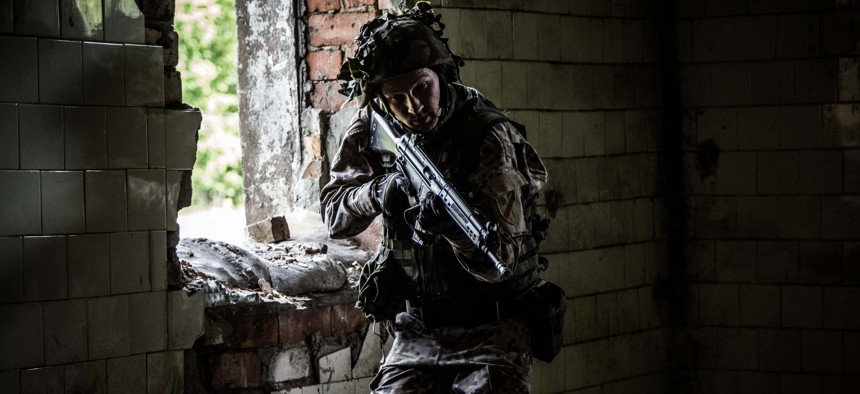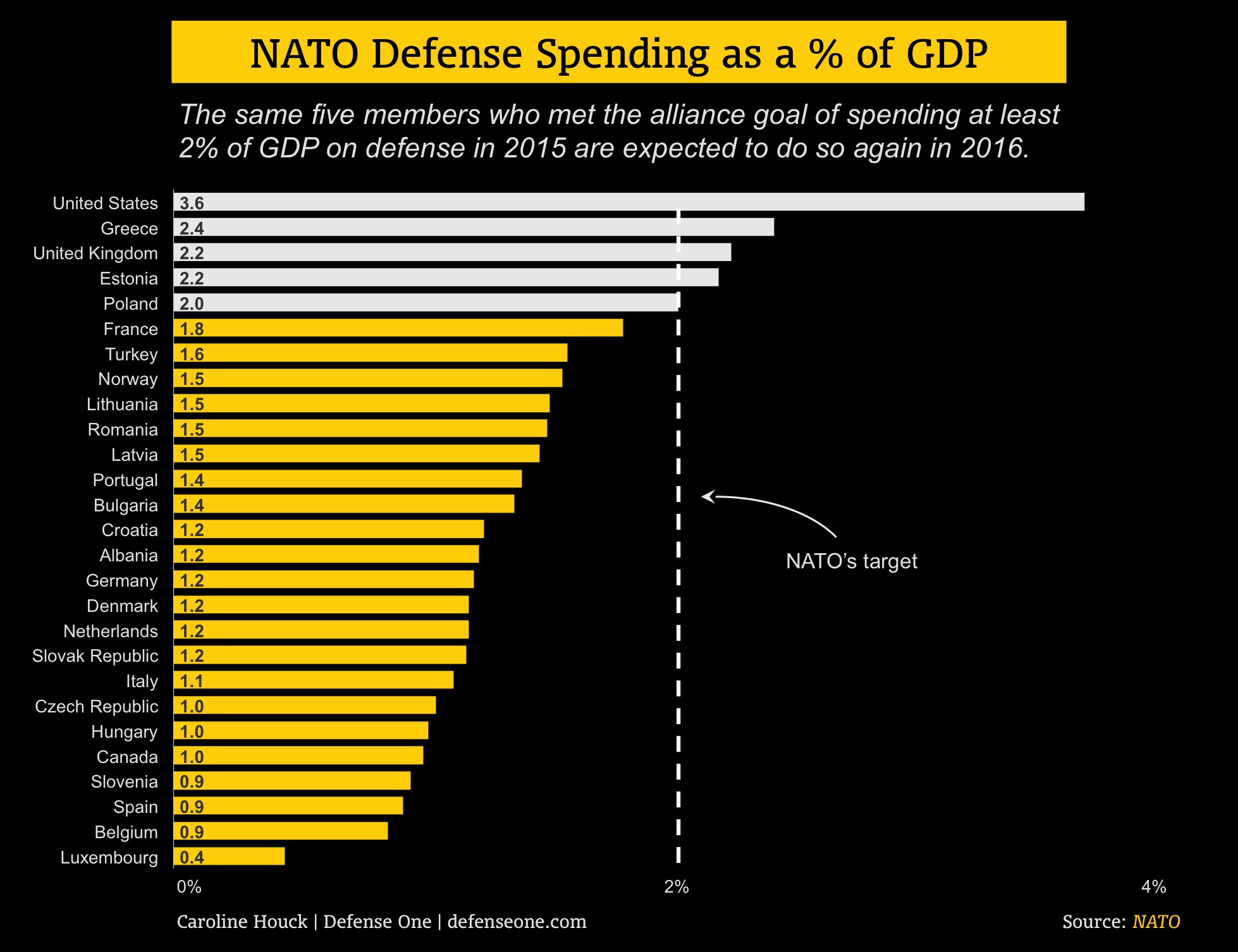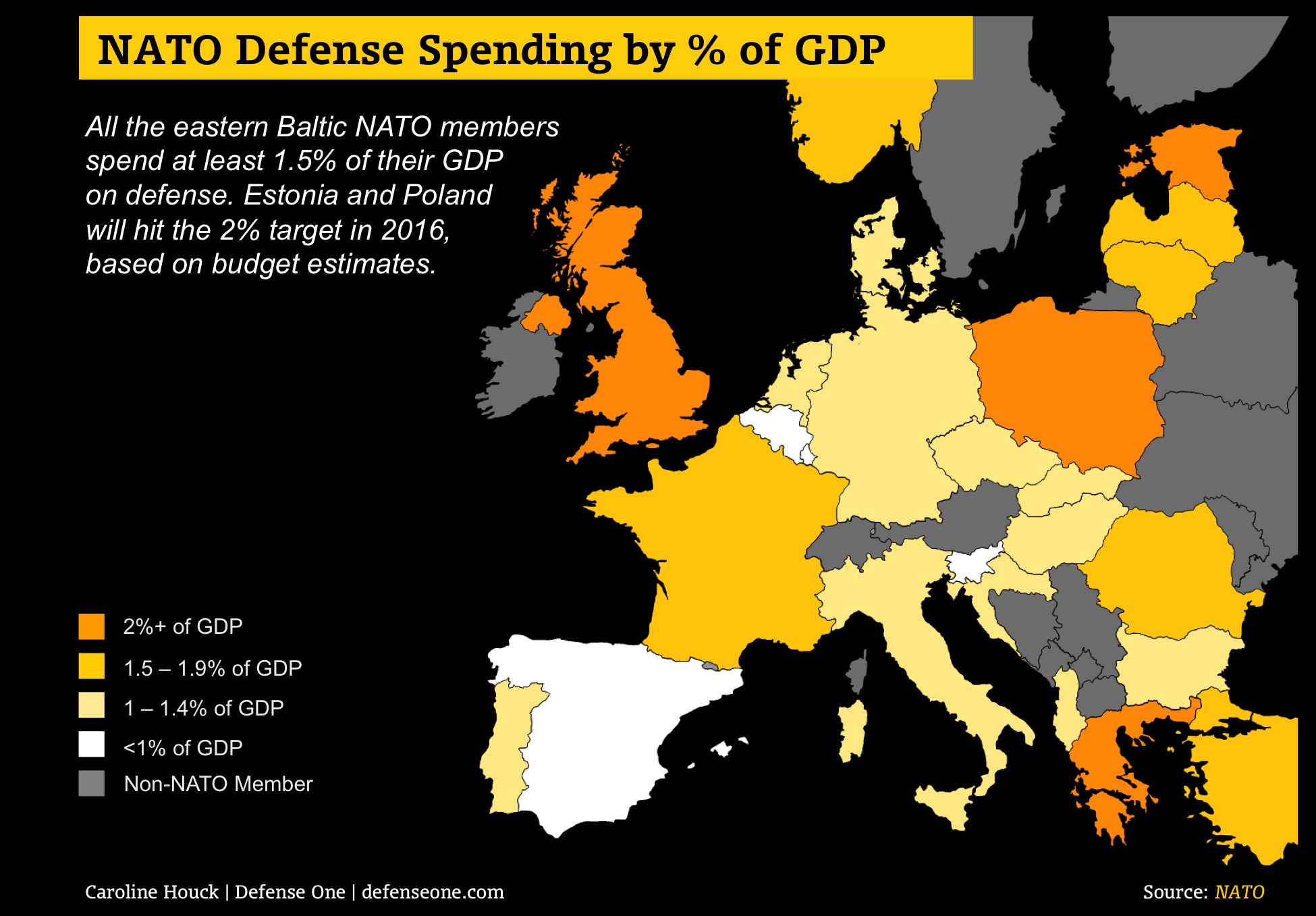
A Latvian National Guardsman training at an undisclosed location, June 5, 2016. Official NATO photo
In 2014, NATO adopted a guideline for members’ defense spending: 2 percent of gross domestic product. On Friday, Republican presidential candidate Donald Trump drew new attention to this guideline when he said he would look at countries’ contributions to the alliance before defending them from an attack.
Here’s who’s currently meeting that guideline:

The U.S. and Britain, which exceeded the 2 percent target in 2015, are projected to do so again in 2016. Two of the remaining three countries slated to meet the goal this year — Estonia and Poland — border the Baltic Sea and have a front-row seat to Russian fly-bys and other intimidation tactics . Two other Baltic countries, Latvia and Lithuania, are increasing their year-over-year defense spending both in real dollars and as a percent of GDP.





